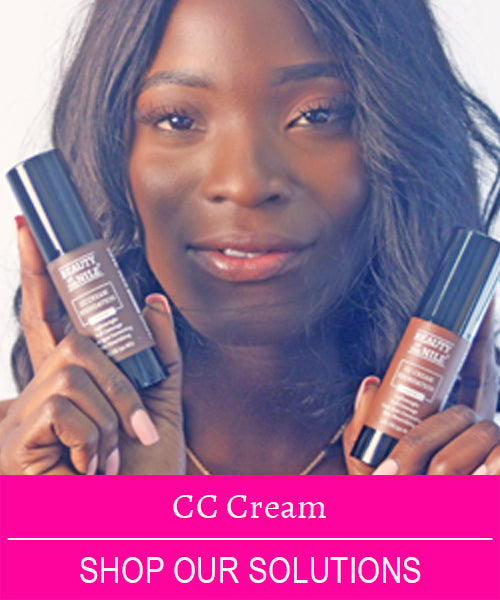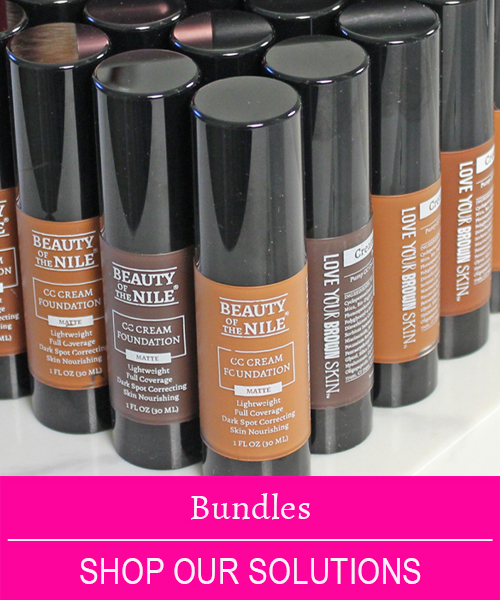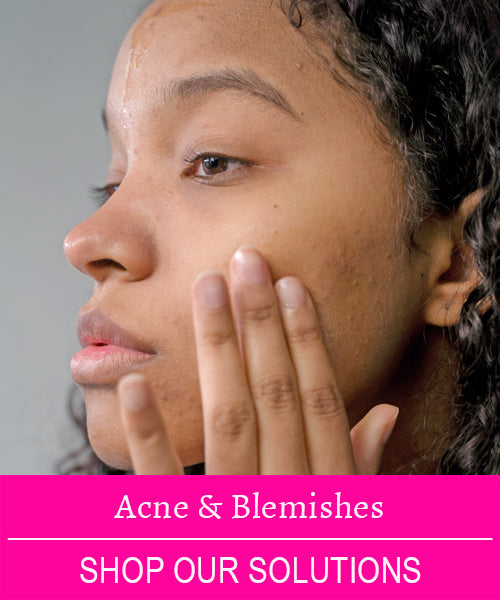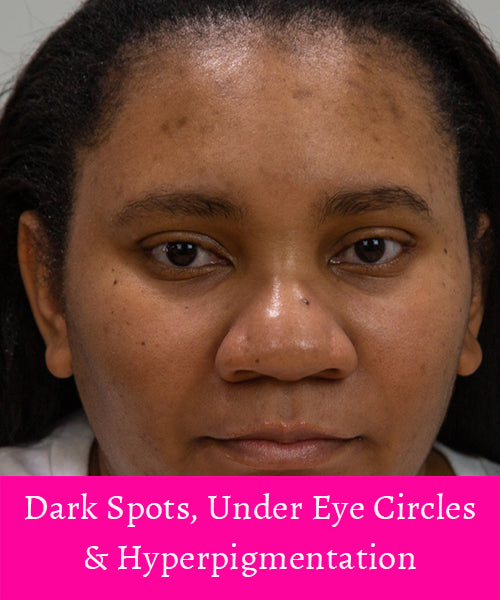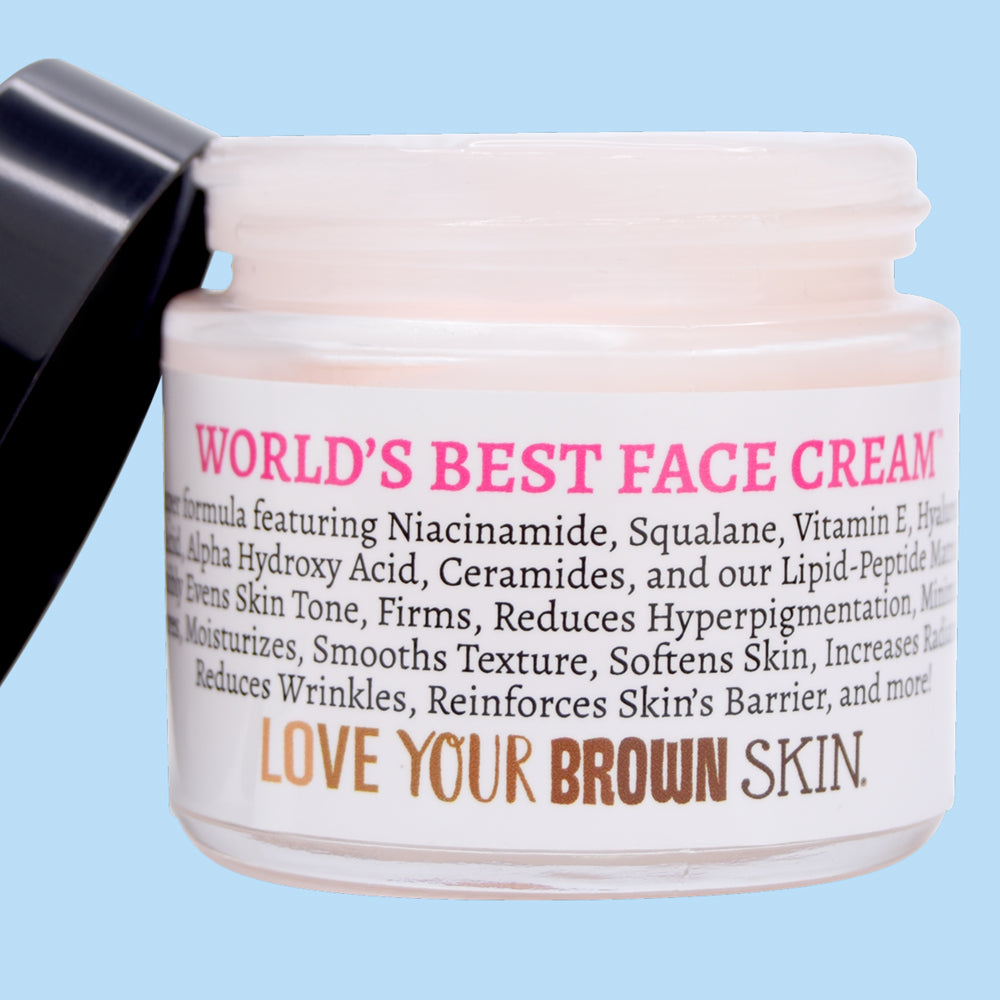How to Overcome Colorism in Your Family: A Step-by-Step Guide
Colorism is a deep-rooted issue that exists in many societies, including families. It refers to the prejudice or discrimination based on the skin color or shade within the same racial or ethnic group.
Overcoming colorism within families is crucial to fostering a more inclusive, supportive, and loving environment for all family members.
This article provides a step-by-step approach to address and overcome colorism within your family.
Remember, change takes time. But with patience, open communication, and understanding, it is possible to create a positive change in your family dynamics. Let's go!
10 Steps to Overcoming Colorism in Your Family
Step 1: Acknowledge and Understand Colorism
The first step in overcoming colorism is acknowledging its presence within your family. Understand that colorism can be deeply ingrained and may have been passed down through generations.
This acknowledgment is vital because it creates awareness of the issue, allowing you to begin the process of change. Discuss colorism with family members and encourage open conversations to better comprehend their perspectives and experiences related to skin color biases.
Step 2: Educate Yourself and Your Family
Educate yourself and your family members about the historical and cultural roots of colorism. Learn about its impact on individuals and communities, and how it perpetuates harmful stereotypes and biases. By understanding the origins and consequences of colorism, you can build empathy and compassion towards those affected by it.
Step 3: Lead by Example
As a family member, it is essential to lead by example. Be conscious of your own thoughts, words, and actions regarding skin color. Avoid making derogatory comments or jokes based on color and challenge such behavior in others. Demonstrate respect and appreciation for people of all skin tones, and ensure your actions reflect your commitment to overcoming colorism.
Step 4: Encourage Open and Honest Discussions
Create a safe space within your family where open and honest discussions about colorism can take place. Encourage family members to share their feelings and experiences without judgment. By fostering an environment of trust and understanding, you can address deep-seated beliefs and misconceptions related to skin color.
Step 5: Promote Diversity in Media and Education
Media and education play a significant role in shaping perceptions of beauty and self-worth. Encourage your family to consume media that celebrates diversity and represents individuals of various skin tones positively. Seek out books, movies, and TV shows that showcase diverse characters and promote inclusive narratives. Furthermore, support educational programs that raise awareness about colorism and its impact.
Step 6: Celebrate Individuality and Unique Qualities
Emphasize the importance of celebrating individuality and unique qualities in each family member, irrespective of their skin color. Recognize and praise each person's talents, achievements, and personality traits, promoting self-esteem and a positive self-image.

Step 7: Challenge Colorist Language and Behaviors
Be vigilant about challenging colorist language and behaviors within your family. If someone makes a colorist remark, address it calmly and respectfully. Explain why such language is hurtful and contributes to the perpetuation of harmful stereotypes. Encourage family members to use inclusive and affirming language that promotes unity and understanding.
Step 8: Teach Empathy and Compassion
Foster empathy and compassion within your family by encouraging members to put themselves in others' shoes. Help them understand the emotional impact of colorism on individuals and communities. Empathy promotes a deeper connection among family members and helps break down barriers created by colorism.
Step 9: Embrace Cultural Diversity
Celebrate and embrace your family's cultural diversity. Recognize that skin color variations often exist within the same racial or ethnic group and that such differences are natural and beautiful. Engage in cultural activities, share traditions, and appreciate the richness that diversity brings to your family dynamics.
THE BEST CRACKED & DRY HEEL FOOT CREAM™ WILL AMAZE YOU!
Step 10: Seek Professional Help if Necessary
Overcoming colorism may require professional assistance, especially if deeply ingrained biases and conflicts are challenging to address within the family. Consider seeking help from counselors, therapists, or support groups specializing in addressing issues related to colorism and racial identity.
The Widespread Impact of Colorism
Colorism is a global issue that affects cultures and societies around the world. Its origins can be traced back to historical and colonial contexts, where European imperialism and the transatlantic slave trade played a significant role in shaping perceptions of beauty and social hierarchies based on skin color.
As a result, colorism has deeply permeated many cultures, leading to the preference for lighter skin tones and discrimination against individuals with darker skin. Most horribly, this discrimination can be seen within families.
According to the African proverb:
When there is no enemy within, the enemies outside cannot hurt you.
We know that among families in many cultures it is normal for parents to have their children bathe in skin-whitening solutions, for parents to only send the lighter-skinned child to college, for family members with certain beauty standards to be celebrated while the beauty of those family members with dark skin is denigrated, for there to be discrimination against those who are not light-skinned in terms of marriageability…
This insanity must stop!
NO MORE SHAVING BUMPS! BELIEVE IT! Click Here
Origins of Colorism
The roots of colorism can be found in colonialism and slavery, where lighter-skinned individuals were often granted more privileges and opportunities, while those with darker skin were subjected to harsher treatment and social marginalization.
European colonizers imposed their standards of beauty and superiority, perpetuating the idea that lighter skin was more desirable and associated with higher status.
Sadly, many cultures embraced this twisted lesson in self-hate from their oppressors and made it their own. It’s a game that they can never win.
Examples of Colorism in Different Cultures
1. Asia: In many Asian countries, colorism is prevalent, with a historical preference for fair skin. For instance, in India, lighter-skinned individuals have often been considered more attractive and have an advantage in the marriage market.
Skin-whitening products are widely marketed and used in countries like India, Thailand, and Japan, reinforcing the belief that fair skin equates to beauty and success.
2. Latin America: In Latin American countries, there exists a long-standing history of colorism stemming from the colonial era. The "casta" system categorized individuals based on their mixed racial heritage, with lighter-skinned individuals holding higher social status.
This system's legacy can still be seen today, where individuals with lighter skin often have more economic and social opportunities than those with darker skin.
3. Africa: Colorism is also prevalent in various African societies, where societal preferences for lighter skin can vary depending on the region. Some African cultures associate lighter skin with wealth, beauty, and higher social status, while darker skin may be associated with rural or working-class backgrounds.
4. Caribbean and Afro-diasporic communities: In regions with significant African diaspora populations, such as the Caribbean and parts of the Americas, colorism persists due to the historical impact of slavery. Lighter-skinned individuals in these communities have historically been more privileged and regarded as more socially acceptable than those with darker skin.
GET THE CC CREAM THAT'S "BETTER THAN FENTY" Click Here
Brown Paper Bag Test
"The brown paper bag test" is a term in Black-American oral history used to describe a racist discriminatory practice within the Black community in the 20th century, in which an individual's skin tone is compared to the color of a brown paper bag.
The test - a testament to self-hatred - was used to determine what privileges an

individual could have. Only those with a skin color that matched or was lighter than a brown paper bag were allowed membership. The test was used by many Black social institutions, such as sororities, fraternities, and social clubs.
The term is also used in reference to larger issues of class and social stratification and colorism within the Black population. Black people were barred from having access to several public spaces and resources because of their darker complexion.
The test was used at the entrance to social functions wherein a brown paper bag was stuck at the door and anyone who was darker than the bag was denied entry.
Source: Wikipedia
5. East Asia: Countries like South Korea, Japan, and China also struggle with colorism. Lighter skin is often perceived as a marker of beauty and refinement.
As a result, the cosmetics industry heavily promotes skin-whitening products, and there is a huge preference for lighter-skinned celebrities in the entertainment industry.
6. Middle East: In some Middle Eastern countries, colorism is rampant. The use of skin-whitening creams and treatments is common, perpetuating the belief that lighter skin is superior and darker skin is inferior.
Colorism is deeply entrenched and leads to discrimination, social disparities, and economic inequality. There is only one way out of this hell. We must fight our way through to the better place.
The Role of Parents in Eliminating Colorism in the Family
Obviously, parents play a crucial role in shaping their children's beliefs, values, and attitudes towards various aspects of life, including issues like colorism. By actively addressing and eliminating colorism within the family, parents can instill values of inclusivity, self- and other-respect, and acceptance in their children, thereby breaking the family cycle of bias and discrimination.
Here are some steps parents can take to combat colorism and promote positive change within their family:
1. Lead by Example: Parents must be mindful of their own actions, language, and attitudes towards skin color. Children observe and learn from their parents, so it's essential to demonstrate a positive and inclusive outlook. Avoid making colorist comments or jokes and promote appreciation for diversity within your family.
2. Teach the Importance of Diversity: Educate your children about the beauty and significance of diversity in all its forms, including skin color. Read books, watch movies, and engage in conversations that celebrate diversity and portray people of different skin tones positively. Encourage your children to ask questions and learn about various cultures and backgrounds.
3. Encourage Critical Thinking: Help your children develop critical thinking skills so they can question and challenge biases they encounter, both within themselves and in the world around them. Teach them to analyze media messages critically and recognize instances of colorism in advertising, society, entertainment, and other forms of media.
4. Emphasize Inner Qualities: Encourage your children to appreciate and value individuals for their inner qualities rather than their external appearance. Highlight the importance of kindness, empathy, intelligence, and other positive traits that define a person's character.

5. Promote Self-Acceptance and Confidence: Foster a sense of self-acceptance and confidence in your children, regardless of their skin color. Help them develop a strong sense of identity and pride in their heritage and culture. When you instill self-assurance in your children, they can resist external pressures and stereotypes related to skin color.
6. Use Inclusive Language: Be conscious of the language you use when discussing appearance, beauty, and race. Avoid making comparisons based on skin color or praising one shade over another. Instead, emphasize the uniqueness and individuality of each family member.
WHAT YOU DON'T KNOW CAN HURT YOUR SKIN
7. Address Colorist Behaviors: If you notice colorist attitudes or behaviors in your child, address them with empathy and understanding. Avoid shaming or punishing them; instead, use it as a teachable moment to explain the harmful effects of colorism and its impact on others.
8. Encourage Multicultural Experiences: Expose your children to diverse cultural experiences. Attend cultural events, festivals, and activities that celebrate different traditions and customs. This exposure will broaden their understanding and appreciation for different cultures and skin tones.
9. Diversify Your Social Circles: Encourage your children to make friends from diverse backgrounds. Interacting with peers of various skin tones can help break down stereotypes and foster empathy and understanding.
10. Foster an Inclusive Environment: Create a safe and inclusive environment at home, where open discussions about race and colorism are encouraged. Address any colorist behavior or comments among family members constructively, promoting a culture of respect and acceptance.
Want LONG, FULL EYELASHES & EYEBROWS AGAIN? Click Here
The Apple Doesn’t Fall Far From The Tree
Parents have the greatest influence on their children's beliefs and attitudes, making it essential for them to take a very active role in eliminating colorism within the family. By leading by example, teaching the importance of diversity, and promoting self-acceptance and confidence, parents can instill positive values and help their children develop a more positive worldview.
Focus particularly on breaking the cycle of colorism in the family, and you will contribute to building a more tolerant and accepting society for your children and future generations.
The Bottom-Line
Overcoming colorism within families is a journey that demands commitment, patience, and understanding from all members. By acknowledging its existence, educating ourselves, and promoting open communication, we can take the steps toward change so that everyone in the family feels valued and loved.
Remember, it's a collective effort, and through perseverance, you can make a positive difference in your family's life and break the cycle of colorism for future generations.
And, always Love Your Brown Skin®




